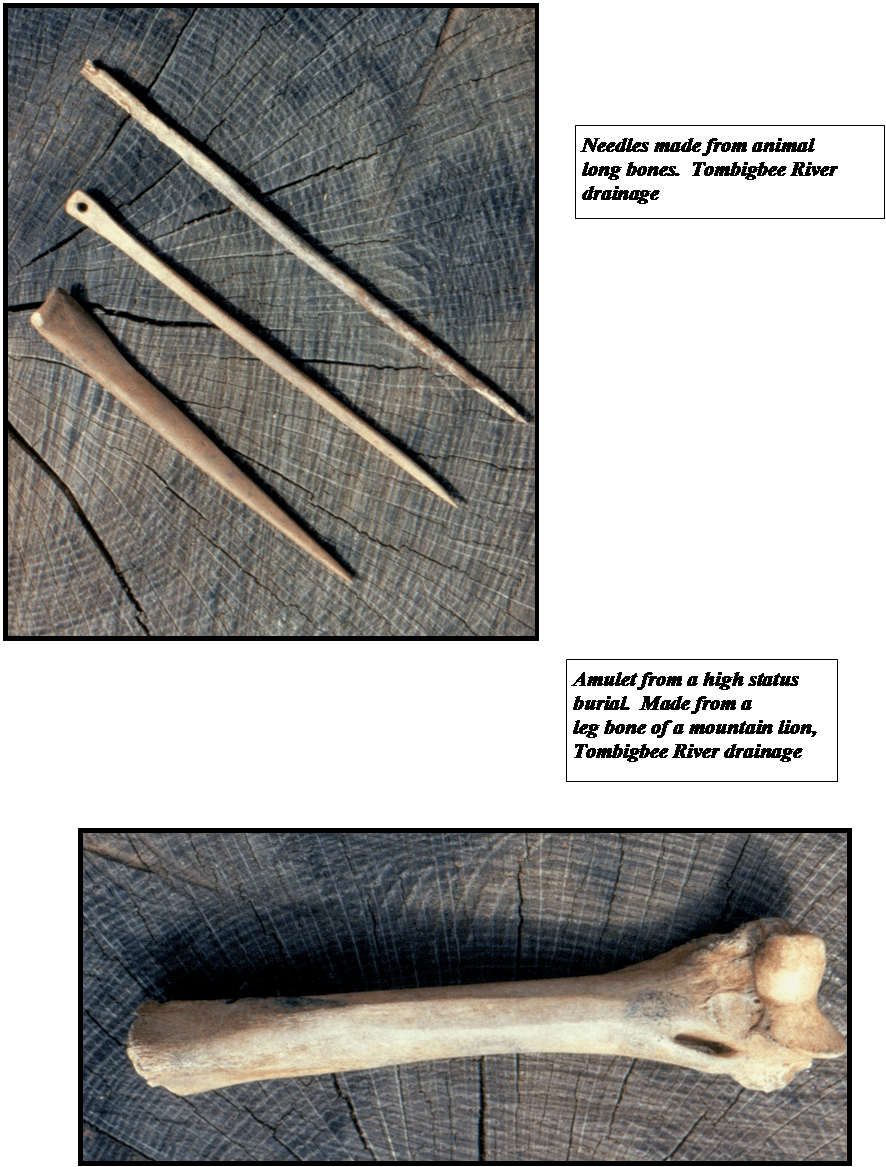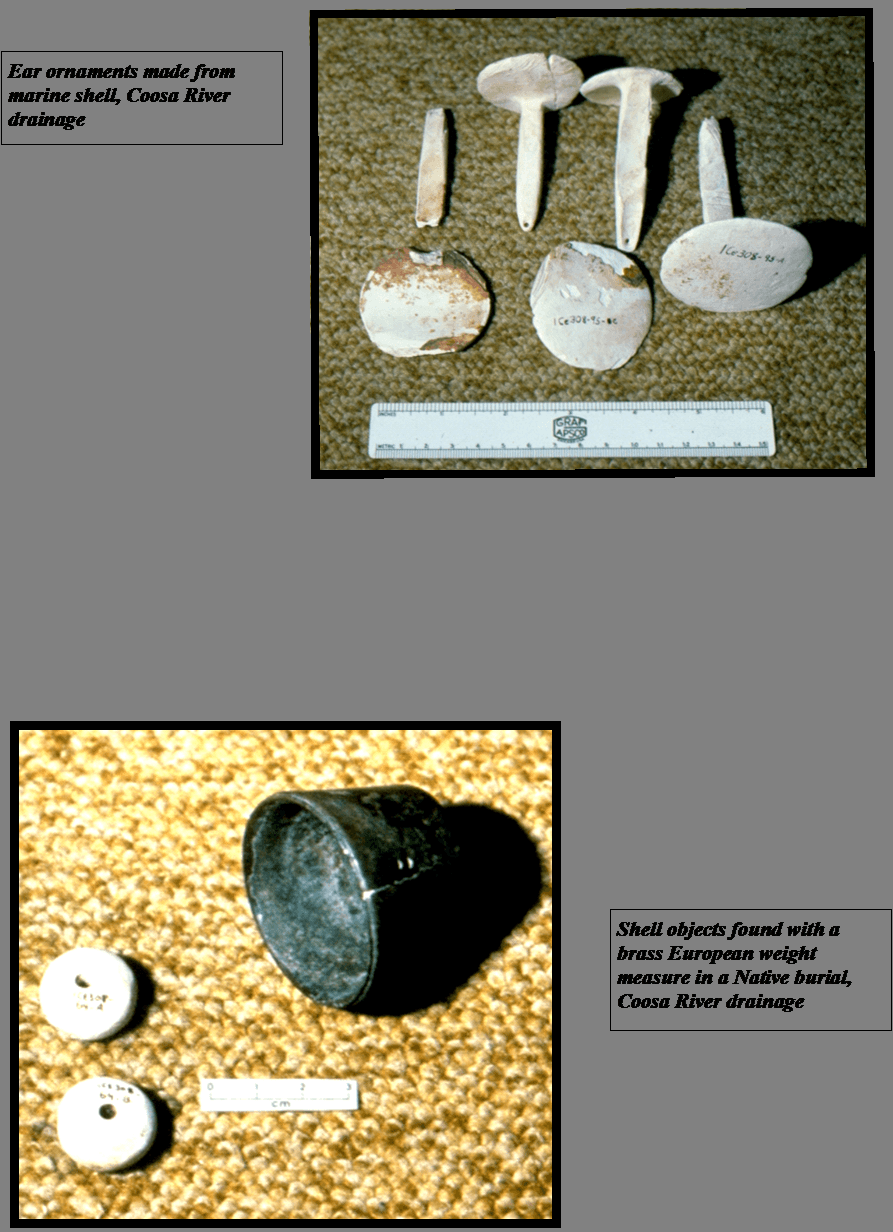Bone and Shell Objects of the Prehistoric Natives of Alabama
by Caleb Curren
Contact Archeology Ink
Shells and bones… something we pick up today on the seashore or in a streambed.. We take them home and put them on a coffee table or on a book shelf, a conversation piece for visits with friends. In prehistory, it was totally different. Those bones and shells were pure gold and survival in the lives of the Natives of North America.
The following pages reflect that fact. Most of the shell objects were found in burials of high status individuals in central and north Alabama. The objects, some utilitarian, some decorative, some ceremonial, are now white and eroded. They were originally multicolored mother-of– pearl or brilliant white with a shine. They were traded widely and were as important to the North American Natives as were golden ornaments and iron utilitarian tools of Old World peoples.
References:
- “Preliminary Analysis of the Faunal Remains”; Caleb Curren (in) Archaeological Investigations in the Gainesville Lock and Dam Reservoir; by, Ned Jenkins. University of Alabama.
- “1Ce308: A Protohistoric Site on the Upper Coosa River in Alabama.” Journal of Alabama Achaeology 27(2). Moundville, Alabama. Curren and Little.
- “A Zooarchaeological Analysis of 4,991 Bone and Shell Artifacts from the Gainesville Lake Area.” Caleb Curren (in) Biocultural Studies in the Gainesville Lake Area. Report of Investigations No. 14. Office of Archaeological Research. University of Alabama. Caleb Curren, December 2009
- Article
-
Shells and bones… something we pick up today on the seashore or in a streambed.. We take them home and put them on a coffee table or on a book shelf, a conversation piece for visits with friends. In prehistory, it was totally different. Those bones and shells were pure gold and survival in the lives of the Natives of North America.
The following pages reflect that fact. Most of the shell objects were found in burials of high status individuals in central and north Alabama. The objects, some utilitarian, some decorative, some ceremonial, are now white and eroded. They were originally multicolored mother-of– pearl or brilliant white with a shine. They were traded widely and were as important to the North American Natives as were golden ornaments and iron utilitarian tools of Old World peoples.
- References
-
References:
- “Preliminary Analysis of the Faunal Remains”; Caleb Curren (in) Archaeological Investigations in the Gainesville Lock and Dam Reservoir; by, Ned Jenkins. University of Alabama.
- “1Ce308: A Protohistoric Site on the Upper Coosa River in Alabama.” Journal of Alabama Achaeology 27(2). Moundville, Alabama. Curren and Little.
- “A Zooarchaeological Analysis of 4,991 Bone and Shell Artifacts from the Gainesville Lake Area.” Caleb Curren (in) Biocultural Studies in the Gainesville Lake Area. Report of Investigations No. 14. Office of Archaeological Research. University of Alabama. Caleb Curren, December 2009





